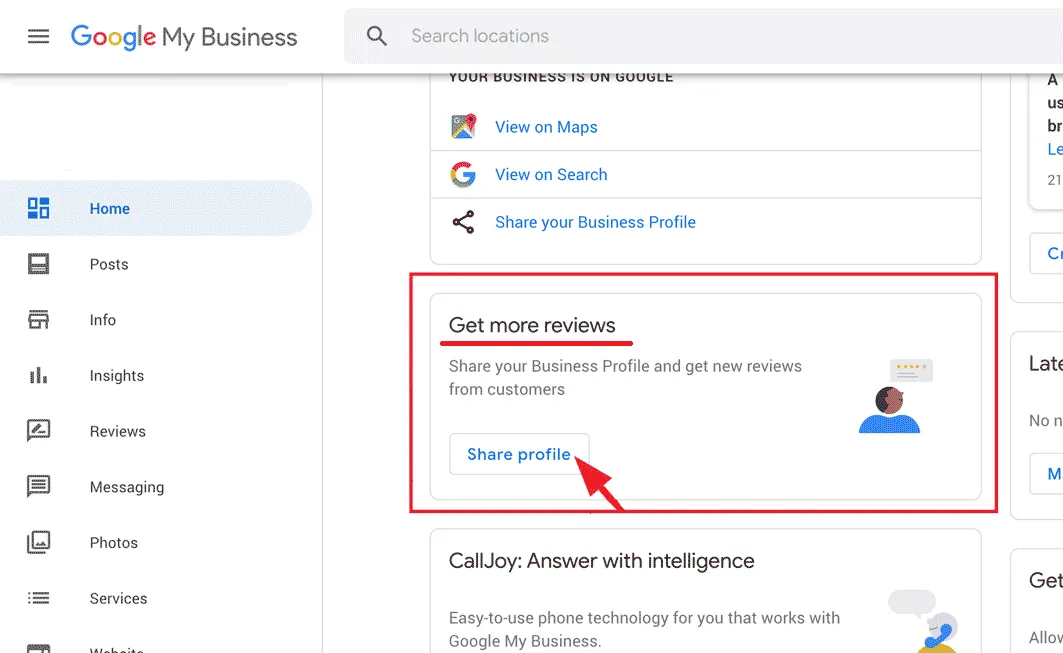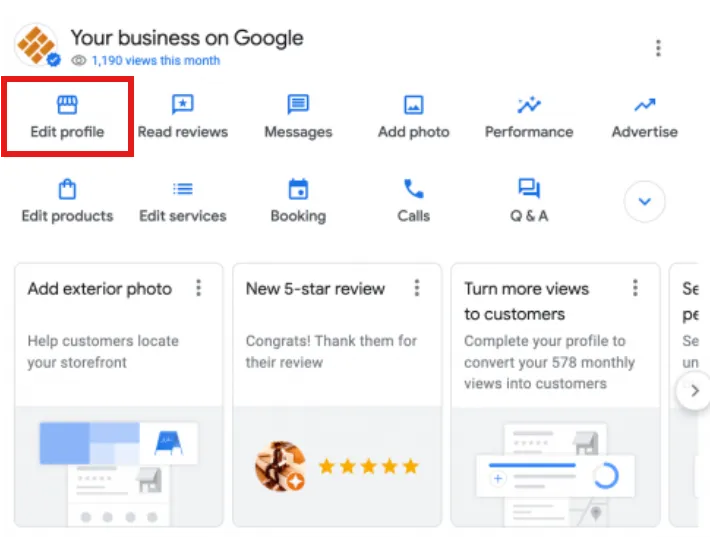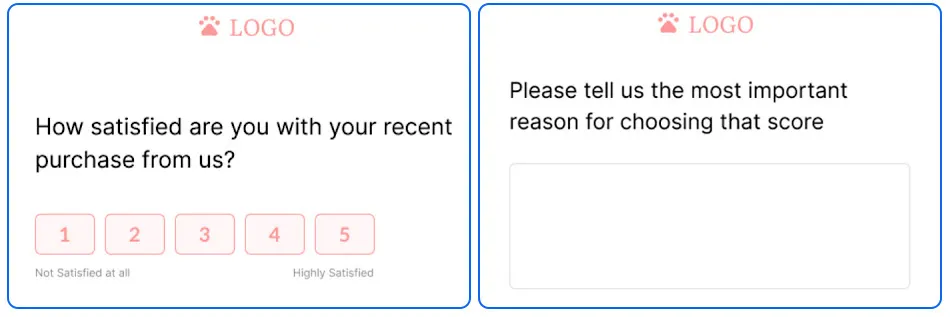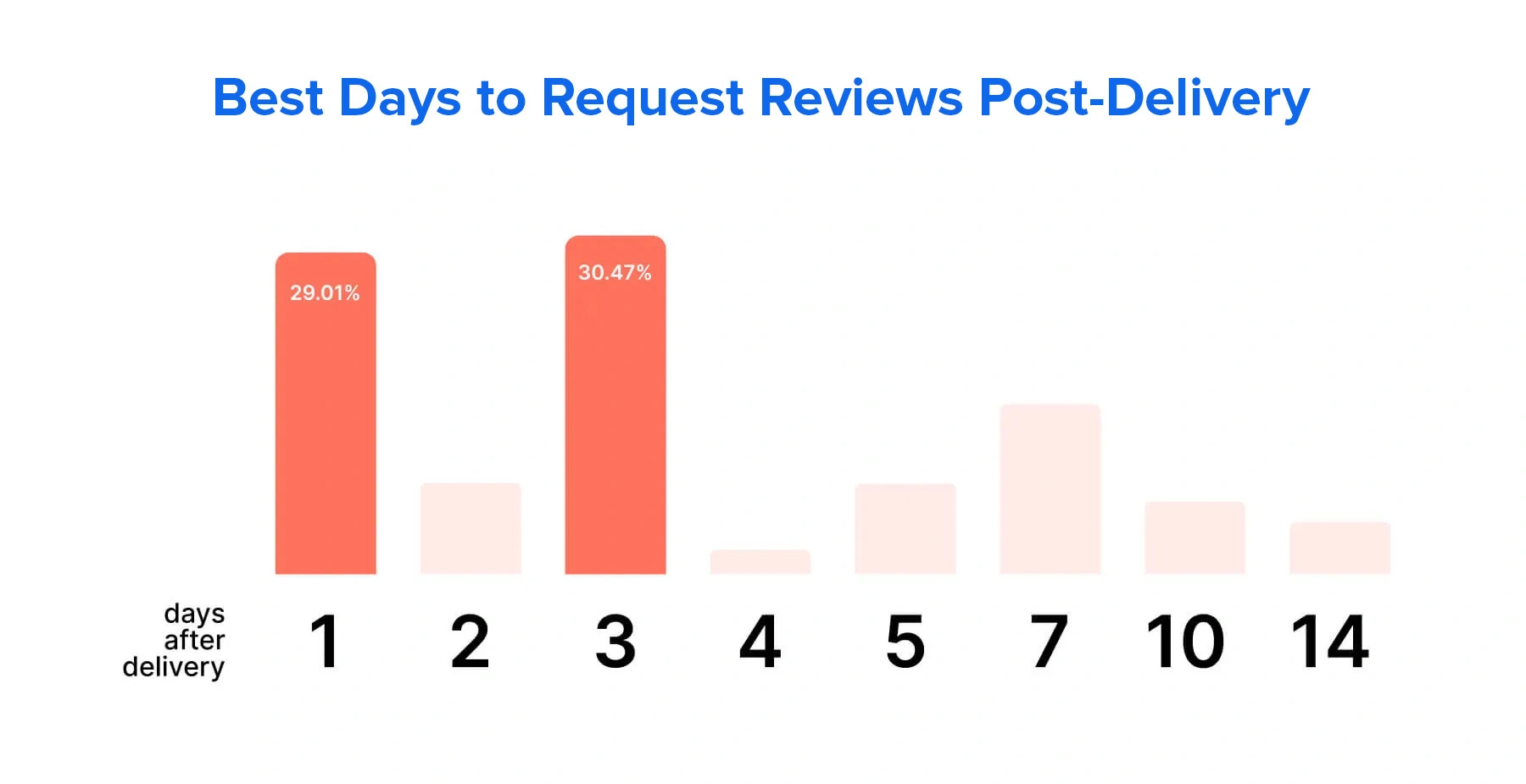“Customers say they love us, but they don’t leave reviews.”
This is a common frustration shared by business owners, marketers, and customer success teams alike. Despite providing excellent service, many brands face a silent gap between customer satisfaction and public endorsement.
But why do reviews even matter? Because 93% of consumers read them before making a purchase decision. That means every missing review is a missed opportunity for influence, credibility, and higher conversions.
But generating authentic reviews doesn’t have to be left to chance. With the right strategy, grounded in behavioral insights and proven outreach techniques, you can turn passive satisfaction into powerful social proof.
In this blog, we’ll walk you through expert-backed, actionable ways to consistently drive customer reviews at scale.
How to Encourage Customers to Leave Reviews: 12 Proven Tips & Strategies
Even though reviews can be great for the growth of a business, the question stands: how do you get people to review your business, especially the happy ones?
As Jonathan Aufray from Growth Hackers puts it, “Most happy customers will never tell you that they’re happy. Unhappy customers will let you know.”
To help businesses overcome such situations and get more authentic reviews, let us now discuss some tips on how to ask for reviews from your customers.
1. Create a Functional Google Review Link
One of the simplest yet most overlooked ways to encourage customers to leave reviews is by making the review process effortless. If you want feedback, don’t make people hunt for where to post it.
The truth is that most of your customers aren’t tech experts. They won’t navigate through pages to find your Google review form. That’s why creating a direct Google review link is essential. It takes them exactly where they need to go, with zero confusion or extra clicks.
Here’s how to generate it:
- Log in to your Google Business Profile.
- On the dashboard, locate the “Get more reviews” card.
- Click on “Share review form” and copy the link provided.


To make it even cleaner and more branded, you can shorten the URL using a trusted tool like Bitly:
- Visit bitly.com
- Sign up or log in
- Select “Create New” → “Link”
- Paste your Google review link and customize it
This tiny step can drastically improve the chances of your customers actually leaving a review, because you’ve made it frictionless.
2. Optimize Your Google Business Profile (GBP)
Before you start asking for reviews, make sure to optimize your Google Business Profile. Why? Because a complete and accurate profile builds trust and helps potential customers feel confident enough to leave feedback or even make a purchase decision.
Here’s how to update your listing:
- Sign in to your Google Business account.
- Click the “Businesses” tab and select the listing you want to edit.
- Tap “Edit profile” as shown in the image below, and then “Business information.”
- Update your details and click “Save” after each change.


To enhance your profile’s credibility and visibility:
- Choose the most relevant business category
- Add your top-selling services or products
- Ensure your contact info is accurate and consistent
- Craft a clear, keyword-rich business description
- Upload high-quality, professional images
When your profile reflects a trustworthy and active business, customers are more likely to engage and leave a review that matters.
3. Ask for Reviews in Open-Ended Formats
When starting a review conversation with a customer, encourage them to share their honest opinions on review platforms by asking them open-ended questions. This helps you gauge their satisfaction before requesting a review. Some examples include:
- “How are you enjoying the [product/service]?”
- “Was there anything you particularly liked about your experience with us?”
- “Do you feel our product/service met your expectations?”
- “Would you recommend our product to your friends/family?”
Asking such questions in feedback forms, in-app surveys, or post-purchase email interactions will allow you to assess whether the customer is satisfied or not. Here is an example of how the brand “LOGO” incorporated open-ended questions in their customer surveys:


4. Send Them Review Reminders
Most people are open to sharing reviews- all they need are a few reminders.
So, how do you remind them? There can be two ways- direct and indirect, or you can also use a combination of both.
Direct reminders generally use clear prompts sent through messages or emails. Mails with subjects like: “Hey, we would love to know your feedback!” or “Leave us a review,” and with a “Leave a review” button, can convince people to share their feedback.
Similarly, indirect asks involve subtly encouraging reviews in marketing materials or adding a call to action at the bottom of a menu, invoice, or receipt to remind your customers to leave a review. You may also hand out some flyers with instructions on “how to leave a customer review” or “how to use a review platform”.
For instance, including a link to a review site in a newsletter or a receipt email qualifies as an indirect ask. Similarly, simply mentioning “We’re on Trustpilot,” “We’re Tripadvisor Traveler’s Choice,” or “We’re on Yelp” without directly asking for a review also counts as an indirect ask.
5. Consider the Timing: Ask When They Are Happy
It’s important to gather genuine feedback, not just positive customer reviews. Businesses can increase their chances of receiving authentic ratings by asking for them when their customers are most satisfied. Timing is the key here.
For instance, when customers share positive feedback, ask them to post it on a review platform while still on-site. Invite them to your desk, provide access to a computer or tablet, and guide them through the process of leaving a comment.
For email review requests, try sending them a few days after selling the product. A study by Harvard Business Review shows that immediate reminders can often turn out to be harmful for businesses, so give your customers the time they need to evaluate your product for its quality and fit.


Here is when to send review requests to increase your chances of getting a review:
- If you offer immediate goods, ask for reviews soon after the sale
- If you are a seller of physical goods, ask for reviews a few days later, depending on the time a customer needs to try and evaluate your product.
- If someone is new to your subscription service, send them a review request on completion of their first month of usage.
- If a customer praises you or recommends your product/service on social media, ask them for a review.
6. Incentivize Customers for Their Reviews
Encouraging customers to leave reviews can be more effective when paired with thoughtful incentives. By offering rewards, you create a win-win situation where customers feel appreciated, and you benefit from their valuable feedback.
Here are some incentive ideas you can consider:
- Offer them a discount on their next purchase.
- Enter them into a lucky draw where they get a chance to win.
- Provide your customers with a free gift or sample with their next order.
- Extend access to exclusive deals or promotions.
- Add loyalty points to their rewards account.
The below image by Wooninjas is a perfect example of incentivizing customers and motivating them to leave reviews.


Such incentives motivate customers to share genuine experiences while fostering positive relationships with your brand. However, under no circumstances should a business buy positive customer reviews, as this can lead to legal action or even a complete suspension of their review account, further damaging their reputation.
7. Automate the Ask
How to get customers to leave reviews without spending hours sending them manual review requests? As a small business owner, you must have pondered this question a lot. We understand that sending personalized review requests can be tedious and time-consuming.
That’s when you use a review automation tool like SocialPilot Reviews. The tool eliminates the hassle by automatically sending timely review requests via texts and emails.
Review automation ensures that your requests reach your customers at the right time, improving your chances of getting their feedback without much manual effort.
As 9Sail’s Kyle Kasharian puts it, “If you can automate your review process based upon specific actions, then it will be even easier to scale and ensure continuity for review requests.”
Here are some ways in which SocialPilot Reviews simplifies the process of review generation and management for businesses:
- Automate Review Requests: Set up campaigns to automatically send review requests via email or SMS to new customers, ensuring timely feedback collection.
- Import Customer Data Seamlessly: Integrate your CRM with SocialPilot to auto-update contacts, enabling prompt review requests to recent customers.
- Customize Branding in Communications: Add your brand’s colors and logos to review campaigns to reinforce brand identity and enhance customer engagement.
- Manage Multiple Brands or Locations Efficiently: Oversee review generation for various brands or locations from a single platform, streamlining operations.
- Address Feedback Proactively: Collect negative feedback privately to resolve issues directly, improving business operations and customer satisfaction.
Automating these tasks using SocialPilot Reviews can simplify your workflow, improve customer engagement, and increase the likelihood of receiving valuable reviews. Businesses can also generate personalized AI responses to better engage with their customers.
8. Personalize Your Review Request
While automation can save you some time and effort, sometimes sending a personalized review request can make a whole lot of difference in encouraging customers to leave their feedback. Personalization tells people that you genuinely value their opinions.
Here’s our advice: Reserve personalized requests for customers who are most likely to leave positive reviews.
Here is how you can craft a personalized review request:
- Start with gratitude: Thank the customer for choosing your business and acknowledge their contributions.
- Highlight their impact: Talk to them about the impact of their Google or Facebook reviews or referrals and express appreciation for their anticipated support.
- Explain the value of their review: Share how their review helps local businesses grow and assists others in making informed decisions.
This approach fosters stronger connections and increases the likelihood of receiving thoughtful and positive reviews.
9. Follow Up on the Review Request
It is important to follow up with customers who haven’t responded to your review request. They might have intended to leave a review but simply forgot. A kind reminder after a few days (ideally 3) can remind them to leave reviews.
However, restrict these requests to 2-3 times after the original review request mail, as constant pestering may annoy them.
Here is how you can draft a simple first reminder message
Hey, “[Customer’s Name],
We noticed you haven’t had a chance to leave a review yet! Your feedback means a lot to us and helps others learn about [Business Name].
We’d greatly appreciate it if you could take a moment to share your thoughts.
[Insert Review Link]
If they delayed the first time, your persistence could encourage them to share their feedback when you ask again.
Here is what your last reminder could look like:
Hi [Customer Name],
Just wanted to check in again about your recent experience with [Business Name].
We understand you may be busy, but your feedback can help us improve and help other customers learn about our product.
If you have a moment, we’d be grateful if you could leave us a Google review:
[Insert Review Link]
10. Offer Multiple Ways to Leave a Review
Providing customers with multiple options for leaving reviews makes it easier and more convenient for them to share their feedback. Remember that consumers trust online reviews and these feedbacks can significantly boost your brand’s presence in SEO rankings.
Offer customers a variety of platforms to leave reviews, such as:
- Your own website for direct feedback.
- Yelp, Facebook, and Google My Business are the top review sites that are trusted for genuine feedback.
- Niche review sites relevant to your industry work great for local businesses (e.g., Capterra, G2, and TrustRadius for software, or TripAdvisor and Oyster for tourism).
- Amazon, if your products are listed there.
Expanding review opportunities across platforms enhances visibility and establishes trust with a wider audience.
11. Remove Any Friction in Leaving Reviews
Make the review process as simple as possible to encourage customers to leave feedback. Here are some things to consider:
- When customers reach the review page, ensure it lives up to expectations.
- Make the review process quick and easy to reduce hesitation.
- Ensure that the review request email templates are straightforward with a user-friendly interface.
- Keep text minimal and explanations concise to avoid overwhelming users and encourage more participation.
By simplifying the review process and emphasizing ease and speed, you can significantly increase the likelihood of customers leaving feedback.
12. Engage With Your Existing Reviews
Lika Djukic from Best Response Media suggests that the most effective way to encourage customers to write reviews is by actively engaging with those who have already shared their feedback.
Here are some tips that can help businesses respond to reviews like a pro:
- Be prompt with your responses: Start by thanking your reviewers for their feedback, whether positive or negative, to show appreciation and attentiveness.
- Resolve issues as early as possible: Acknowledge concerns in a professional and empathetic manner and offer solutions for improvement.
- Encourage further interaction: Invite reviewers to try some of your new products/services, join loyalty programs, or share additional thoughts to keep the conversation going.
Why Are Customer Reviews Crucial
75% of customers believe that business review sections are as helpful as personal recommendations and can help establish the credibility of a business. As more and more consumers read online reviews before their purchases, it becomes increasingly important for businesses to get a good number of them.
A strong review presence not only builds trust but also influences buying decisions. That’s why many businesses focus on customer reviews to strengthen their reputation and attract more customers. Here is what makes customer reviews so crucial.
1. Reviews Build Trust and Credibility
Online reviews are one of the most trusted forms of social proof. Backed by real customer experiences, they help establish your business’s reliability and service quality in the eyes of new prospects.
Positive reviews reduce perceived risk and reassure potential customers that choosing your business is a safe and smart decision. In fact, people are far more likely to trust peer feedback than promotional claims.
In today’s competitive market, a steady stream of reviews can significantly enhance your credibility and set you apart. Without them, even a great business risks being overlooked in favor of competitors with visible customer endorsements.
2. Reviews Influence Purchase Decisions
Research shows that displaying customer reviews and testimonials can boost the sales of a business by up to 270%. While positive feedback can convince your potential buyers that a product is a worthy investment, negative reviews can deter them.
Having detailed and genuine customer reviews makes it easier for your customers to trust your product or service. Moreover, research shows that customers tend to trust companies that have a higher volume of reviews for their products.
3. Reviews Boost the SEO
Reviews have a direct impact on your website’s SEO. Simply put, the more positive reviews you have for your business, the better your website’s ranking will be. When search engines find quality content, they reward it with higher visibility.
For example, if McKensy Burgers has stellar reviews, Google is more likely to rank its website higher when someone searches for “good burgers near me.” More five-star reviews lead to more website visits, which signals to search engines that your site is an authority, ultimately driving more traffic and generating leads.
4. Provide Businesses with Valuable Customer Feedback
Reviews offer businesses essential insights into customer experiences, both good and bad. They highlight what your business does well and identify areas for improvement. By analyzing this feedback, businesses can refine their products and services to better meet the needs of their customers.
Not to mention, taking customer feedback seriously and genuinely working on the shortcomings can help a business improve its brand loyalty. Ultimately, these reviews help businesses adapt, grow, and stay competitive in an ever-evolving marketplace.
5. Helps Build Powerful Brand Advocates
Loyal customers or the ones providing positive feedback can be your business’s powerful brand advocates. These satisfied customers can help spread the word, provide more reviews, and refer others. Their endorsements act as authentic, peer-driven testimonials that potential customers trust.
By engaging with these positive reviewers, businesses can forge long-term relationships that increase customer retention and advocacy. Recognizing, rewarding, and leveraging these connections creates a mutually beneficial relationship, turning them into a reliable source of new customers.
How to Respond to Customer Reviews
Getting customers to leave reviews for your business is only half the battle. The other half lies in how you respond and engage with those reviews. According to recent studies, 88% of consumers would be more likely to buy from businesses that actively respond to their positive or negative reviews. This makes reviews one of the most influential tools in shaping a company’s reputation and credibility.
Here are some ways in which businesses can approach positive reviews:
- Gratitude and Validation: Start by thanking the reviewer for taking the time to post their genuine feedback and acknowledging their experience.
- Appreciation with Reassurance: Avoid using generalized, standard responses. Use the customer’s name along with particular details. Start by expressing appreciation for their feedback and then reinforce the value of their support.
- Encouraging & Forward-Looking: Start by talking about their feedback and then end with a positive, forward-looking message to encourage future interactions.
Here is how businesses can reply to their negative reviews:
- Empathetic, Solution-Oriented: Tackle unfavorable feedback by recognizing the problem and expressing regret. Start by apologizing for any inconvenience caused and then offer them a solution/support to resolve their issue.
- Apologetic and Reassuring: Regardless of the severity of the review, stay composed, courteous, and oriented toward solutions. Ensure them that their issue is being looked into and will be resolved soon.
- Constructive and Improvement-Oriented: Start by thanking the customer for their feedback and then suggest methods to address the issue or encourage the reviewer to discuss the problem privately.
Common Challenges in Leaving/Managing Reviews
Although reviews have a significant influence, getting the right reviews and handling them well can be difficult. Let’s analyze some typical challenges and ways to tackle them.
Large Number of Reviews
Managing numerous reviews on various platforms can be daunting for small teams.
Solution: Use platforms such as SocialPilot Reviews, Yext, Birdeye, or Podium for streamlined review handling. These review management tools assist in monitoring and addressing reviews from a single dashboard, simplifying and organizing the process. They make review management seamless by importing the reviews from different directories and keeping you notified in real-time.
Handling Adverse Feedback
Negative feedback can seem personal, and if not managed properly, it could harm the reputation of your business.
Solution: Negative reviews are inevitable, but your response defines your brand. Start with a sincere apology, acknowledge the issue, and show empathy. Use the feedback as an opportunity to improve and demonstrate your commitment to customer care by offering a clear resolution.
Example:
Dear [customer],
We’re sorry to hear about your experience and truly appreciate your feedback. We understand how frustrating it can be when things don’t work as expected.
To resolve this, we’d like to investigate this issue further and ensure everything works well for you moving forward.
Could you please reach out to us at [support email]?
Our support team would be happy to assist you.
Ensuring Uniformity
Different employees responding to reviews can lead to inconsistent messaging and tone.
Solution: Establish a clear brand voice, review response policy, and review templates. Train your team to ensure consistency across all replies. Use tools like SocialPilot to centralize responses and enable seamless collaboration. Regularly update your guidelines to reflect evolving customer expectations and maintain a unified, trustworthy brand presence.
Fake Testimonials or Malicious Reviews
Businesses may also encounter reviews that are fake or designed to intentionally harm a brand’s reputation.
Solution: Use platforms like Google to report fake reviews; just ensure you have evidence to support your claim. Respond professionally to maintain credibility, and focus on generating authentic reviews from real customers to counterbalance any misleading feedback.
Example:
Dear [customer],
We at [company’s name] take all our customer feedback seriously, but we do not have any record of your experience.
Please contact our customer support directly via [email id] so we can address this matter further.
Getting People to Leave A Review
Most of your happy customers may refrain from writing reviews, making the overall ratings of your business go down.
Solution: Proactively request reviews and automate the outreach using tools like SocialPilot. Send follow-up emails or SMS messages thanking customers and including a direct review link. Reinforce your request by applying the strategies shared earlier in this blog.
Example:
Hi [Customer’s Name],
Thank you for choosing [Business Name]!
We hope you’re enjoying your [product/service]. Your opinion matters to us, and we’d love to hear about your experience.
Leaving a review is quick and easy, just click on [Insert Review Link] and express your feedback.
Conclusion
Getting customers to leave reviews is not just about boosting your online presence; it’s also about building your credibility, improving your offerings, and fostering a loyal customer base.
When happy customers share their experiences, it creates a ripple effect, building more trust and drawing new customers.
But remember that the journey doesn’t end with collecting reviews. Actively responding to both positive and negative feedback demonstrates your commitment to customer satisfaction.
That said, maintaining this momentum manually can be overwhelming.
But SocialPilot Reviews help you automate this entire process, right from collecting reviews to managing them, ensuring no opportunity for engagement slips through the cracks.
Ready to boost your online reputation with review automation? Try SocialPilot Reviews today and experience the difference.
